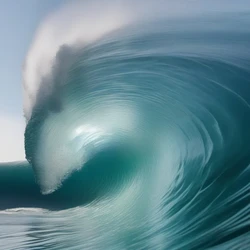That depends on how you define the web
Wikipedia:
https://en.wikipedia.org/wiki/Gopher_(protocol)
The Gopher protocol (/ˈɡoʊfər/ ⓘ) is a communication protocol designed for distributing, searching, and retrieving documents in Internet Protocol networks. The design of the Gopher protocol and user interface is menu-driven, and presented an alternative to the World Wide Web in its early stages, but ultimately fell into disfavor, yielding to Hypertext Transfer Protocol (HTTP). The Gopher ecosystem is often regarded as the effective predecessor of the World Wide Web.[1]
gopher.floodgap.com is one of the last running Gopher servers, was the one that I usually used as a starting point when firing up a gopher client. It has a Web gateway up:
https://gopher.floodgap.com/gopher/
Gopher is a well-known information access protocol that predates the World Wide Web, developed at the University of Minnesota during the early 1990s. What is Gopher? (Gopher-hosted, via the Public Proxy)
This proxy is for Gopher resources only – using it to access websites won’t work and is logged!




I think that this is “video” as in “moving images”. Photoshop isn’t a fantastic tool for fabricating video (though, given enough time and expense, I suppose that it’d be theoretically possible to do it, frame-by-frame). In the past, the limitations of software have made it much harder to doctor up — not impossible, as Hollywood creates imaginary worlds, but much harder, more expensive, and requiring more expertise — to falsify a video of someone than a single still image of them.
I don’t think that this is the “end of truth”. There was a world before photography and audio recordings. We had ways of dealing with that. Like, we’d have reputable organizations whose role it was to send someone to various events to attest to them, and place their reputation at stake. We can, if need be, return to that.
And it may very well be that we can create new forms of recording that are more-difficult to falsify. A while back, to help deal with widespread printing technology making counterfeiting easier, we rolled out holographic images, for example.
I can imagine an Internet-connected camera — as on a cell phone — that sends a hash of the image to a trusted server and obtains a timestamped, cryptographic signature. That doesn’t stop before-the-fact forgeries, but it does deal with things that are fabricated after-the-fact, stuff like this:
https://en.wikipedia.org/wiki/Tourist_guy